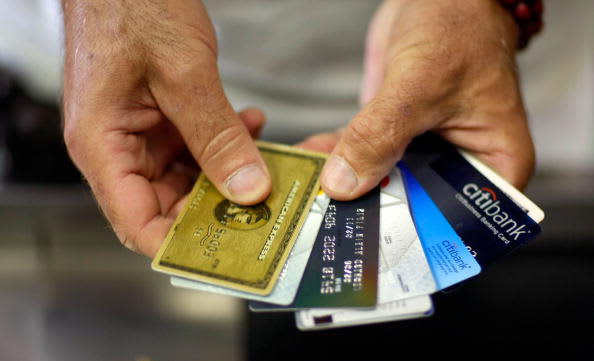If you’re hoping to snag the best-available terms on a loan, a standard rule of thumb about credit card usage could end up messing with your plans.
The common advice is to keep revolving debt below 30% of your available credit so your utilization rate doesn’t hurt your credit score. Yet experts say your FICO score — which most lenders use in their decision-making — starts taking a hit well below that threshold.
“Anything above 5% will start lowering FICO scores,” said Al Bingham, a credit expert and author of “The Road to 850.”
Joe Raedle | Getty Images
Exactly how much, he said, depends, including how long the accounts have been opened. Regardless, your score continues dropping as your utilization rate climbs toward 30% — and does not suddenly nosedive at that recommended ratio, Bingham said.
“The actual score decline varies a little from person to person,” Bingham said. “Those that have a lot of depth in their credit report will not see the same drop as someone who has only one [newly opened] credit card.”
The world of credit scoring is a complicated one.
Yet as many consumers know, the higher your score, the better terms you can get on loans and credit cards. The lowest rates are generally reserved for those with a credit score of at least 750, although sometimes that’s 760 or even 780, depending on the type of loan and the terms.
The best-known scores among consumers are FICO — which has been around since 1989 — and VantageScore, which is a joint venture among the nation’s three biggest credit-reporting firms: Experian, Equifax and TransUnion. It was created in 2006 as a competitor to FICO.
The most familiar versions of both result in a score that falls on a scale of 300 to 850. However, the specific algorithms used to arrive at your numbers are different. This means consumers may track a score that’s different from what a lender will use (roughly 90% use FICO scores in their decisions). A FICO score may even differ from one credit-reporting firm to the next for the same person.
And while your credit utilization ratio is only one item contributing to your score, the idea that anything below 30% is acceptable could be doing some consumers a disservice.
“There is nothing significant about 30% revolving utilization — it’s relative,” said Can Arkali, principal scientist of analytics and scores development at FICO.
Arkali said that while there are “no hard and fast rules” for an ideal credit utilization ratio, FICO research shows that the highest-scoring 25% of consumers — those with a score above 795 — use an average 7% of their credit limit.
“There is nothing significant about 30% revolving utilization — it’s relative.
Can Arkali
Principal scientist of analytics and scores development at FICO
Moreover, most consumers with the best scores owe less than $2,500 on revolving accounts, according to myfico.com. (In some cases, a low utilization ratio has a more positive impact on your score than not using any of your available credit at all, Arkali said.)
Of course, lenders also typically weigh additional items, including income, length of employment, stable housing or other aspects of your financial life that don’t show up in your credit report or get reflected in your score.
To illustrate the difference that interest rates can make: On a $200,000 mortgage, paying 3.5% over 30 years incurs roughly $123,000 in interest. Just a half percentage point higher, 4%, would result in paying about $143,500 in interest over the same time — $20,500 more. And at 4.5%, the interest would total more than $164,500 — $41,500 more than at 3.5%.
More from Personal Finance:
One retailer trick you don’t want to fall for this holiday season
What to know if you need some relief from medical debt
Why your vaping habit could raise your life insurance costs
It’s also worth noting just one relatively high balance on a card can negatively affect your score more than you might think.
“It could hurt your score if you max out on one card even if the others have a low utilization rate,” said Rod Griffin, director of consumer education and awareness for Experian.
He also said that when you cross the 30% utilization ratio, your score begins dropping faster if your debt continues to climb.
Weekly advice on managing your money
Get this delivered to your inbox, and more info about about our products and services.
By signing up for newsletters, you are agreeing to our Terms of Use and Privacy Policy.
From a personal finance standpoint, the recommended limit could be a good a way to keep your usage of plastic down. Collectively, U.S. households owe close to $1.08 trillion in credit card debt, according to September data from the Federal Reserve.
“It encourages people to keep their level of debt at a manageable amount,” said Bruce McClary, spokesman for the National Foundation for Credit Counseling. “It also ensures that you have room to cover an unexpected expense.”
At the same time, however, carrying balances from month to month — which about 60% of consumers do — can end up being costly.
The average interest rate on credit cards is 17.25%, according to CreditCards.com. A decade ago, it was about 12%.
